
China Leaves Nepal with a Pricey Airport and Financial Woes
Financial concerns surrounding the construction of Pokhara International Airport, funded in part by Chinese loans, have raised eyebrows and prompted global attention. The New York Times has recently published an extensive report, labeling the project a “costly airport.”
The ambitious development of Pokhara International Airport, located in the scenic city of Pokhara, Nepal, was intended to bolster the region’s tourism industry and provide a gateway for international travelers. However, concerns have emerged over the financial risks associated with the project, which is primarily funded through loans from China.
The news reported by Daisuke Wakabayashi, Bhadra Sharma and Claire Fu, stated that commencing with a bustling morning in June, the airport’s international terminal in Pokhara, Nepal’s second-largest city, bustled with the landing of a Sichuan Airlines flight from China.
Amid a ceremonious welcome for the arriving passengers, the event highlighted the airport’s reliance on Chinese support for its operations.
It added that beneath the surface of the celebratory atmosphere lies a disquieting truth: the costly airport, predominantly constructed by Chinese enterprises and financed by Beijing, represents a diplomatic triumph for China, but burdens Nepal with enduring debt to its Chinese creditors.
Nepal’s aspiration to establish an international airport in Pokhara dates back to the late 1970s, with hopes of propelling the city into a global tourist hotspot, according to the New York Times report.
However, due to political complexities and financial constraints, the project languished for decades until China intervened.
The airport’s construction forms part of China’s ambition to carve its own sphere of influence as an alternative to dominant American power.
Nepal’s proximity to India, a rising contender for regional supremacy, enhances its strategic appeal for China, it said.
According to the report, towards the end of 2022, as the project approached its conclusion, Zhu Zhanfeng, the project site manager for the contractor, exuded confidence. In an interview, he highlighted Pokhara’s future as home to the “first modern airport in Nepal,” built in accordance with “Chinese standards.”
In the wake of the airport’s completion, Beijing has actively labeled it as a constituent of President Xi Jinping’s Belt and Road Initiative, an infrastructure venture that has come under scrutiny for its costly and substandard constructions, leaving borrowing nations ensnared in debt.
The report further adds in Nepal, China CAMC Engineering, a subsidiary of the state-owned conglomerate Sinomach, spearheaded the project, importing materials and machinery from China, thus embedding Chinese technology and design into the airport’s framework.
However, an investigation by The New York Times revealed that the Chinese company had consistently prioritized its profits and interests, undermining Nepali oversight in the process.
Consequently, Nepal is now burdened with an overpriced international airport, lacking the necessary traffic to repay its loans to the Chinese lender.
Approval of a 20-Year Loan Agreement Set amidst the Himalayan foothills, Pokhara entices tourists with its stunning natural landscapes.
On clear days, the city offers a panoramic view of three of the world’s tallest mountains, attracting hikers to the Annapurna range, it said.
In 2011, a year before China formally committed to financing the airport, Nepal’s finance minister endorsed a memorandum of understanding supporting CAMC’s proposal, even before any competitive bidding commenced.
Under the Chinese loan agreement, only Chinese companies were permitted to compete for the project.
CAMC’s winning bid of $305 million, nearly twice the estimated cost, sparked controversy among Nepali politicians, who deemed the price exorbitant and the bidding process rigged.
Eventually, CAMC reduced the cost to $216 million, a decrease of about 30 percent.
In 2016, China and Nepal signed a 20-year agreement, with a quarter of the funds provided as an interest-free loan. Nepal was to borrow the remaining amount from China’s Export-Import Bank at 2 percent interest, with repayments scheduled to commence in 2026. Construction began a year after the loan deal was finalized.
In 2018, Murari Gautam, one of the initial engineers and external consultants overseeing the Chinese contractor for the Civil Aviation Authority of Nepal, raised concerns.
Despite an initial budget allocation of $2.8 million for hiring consultants to ensure adherence to international construction standards, this amount was later reduced to $10,000, diverting the funds elsewhere, according to the report.
The report has further quoted Gautam who noted several issues with CAMC’s work, including inadequate soil density testing for the runway, an improperly designed drainage system, and a lack of documentation verifying the quality of Chinese materials.
In this conversation with New York Times, he expressed his frustration with the absence of effective oversight from Nepal, leading to inflated project costs and compromised quality.
The report also includes the quote of Krishna Paudel, an engineer at the aviation authority, who maintained a positive working relationship with CAMC, acknowledging occasional misunderstandings but emphasizing the agency’s oversight role.
However, the close relationship between CAMC and China IPPR International Engineering, a subsidiary of Sinomach, raised concerns about potential conflicts of interest, especially after CAMC acquired IPPR in 2019, it said.
Jacky Zhao, formerly with IPPR, revealed that his superiors instructed him not to scrutinize CAMC’s work too closely, suggesting an emphasis on completing the project rather than ensuring quality. Allegations of falsified documents within the project team further added to the complexity of the situation.
In August 2022, IPPR terminated Mr. Zhao and Ms. Wang for defying instructions to return to China, citing their previous complaints about $11,000 in unpaid expenses as the reason for their retaliation. When questioned by The Times, Zhu declined to discuss the incident, urging further inquiries to be directed to the Chinese Embassy in Nepal, which did not respond to an email seeking comment.
CAMC and IPPR did not provide any response despite several attempts to contact them via email and messages to comment on their involvement at the Pokhara airport.
According to the report, towards the end of 2022, as the project approached its conclusion, Zhu Zhanfeng, the project site manager for the contractor, exuded confidence. In an interview, he highlighted Pokhara’s future as home to the “first modern airport in Nepal,” built in accordance with “Chinese standards.”
There was no mention, however, of the fact that three years earlier, Zhu had been involved in a fatal accident, striking and killing a pedestrian in Pokhara after a night of drinking.
According to a police report, an officer at the scene suspected Zhu of driving under the influence when he hit Deu Kumar Tamang, who was crossing a walkway around 11 p.m. on July 2, 2019, with his Toyota Hilux pickup truck.
Tamang succumbed to “blunt force injury to the abdomen” upon impact, as per the autopsy report, according the New York Times.
Following the incident, CAMC approached Tamang’s family with an offer of 1 million Nepali rupees, roughly $7,500, as compensation, according to the victim’s brother, Nabin Tamang.
When the family declined, a CAMC representative allegedly remarked that Tamang was “already dead” and that the family should settle.
Eventually, CAMC proposed to double the payment and provide space for a coffee shop within the new airport. Despite living in a small shack in a remote mountain village, the family accepted the offer, contingent upon Mr. Zhu’s release from prison.
During the trial, Zhu’s legal team argued that Mr. Tamang had been drinking and had approached the car, implying that the car did not hit him.
They also stated that the family had already received funds for last rites. Zhu himself claimed to have consumed only one beer earlier that night and insisted that he was driving cautiously when the collision occurred.
Eventually, Zhu was found guilty of a “traffic death” and sentenced to four months in prison, a shorter term than the maximum sentence of one year for such an offense.
He was released on bail after serving 50 days, avoiding the more severe charge of vehicular manslaughter, which carries a potential prison term of up to 10 years.
When questioned by The Times, Zhu declined to discuss the incident, urging further inquiries to be directed to the Chinese Embassy in Nepal, which did not respond to an email seeking comment.
Zhu appealed the four-month sentence, and Pokhara’s High Court ruled in his favor, concluding that neither alcohol nor reckless driving had contributed to the fatality.
In February 2021, his sentence was reduced to the time he had already served. Struggling to generate the revenue needed for loan repayment, Nepali government officials reportedly appealed to China to convert the loan into a grant, as per local media reports.
Nabin Tamang suggested that CAMC and Nepali authorities achieved the outcome they desired: uninterrupted progress in airport construction.
He emphasized that the driver, a significant figure overseeing much of the airport’s work, was swiftly released. CAMC ceased responding to his inquiries about the coffee shop once Mr. Zhu was set free.
It may be noted that on January 1, 2023, Nepal’s Prime Minister, Pushpa Kamal Dahal Prachanda, formally inaugurated the airport.
Despite this, the local media’s focus that day was on a tweet from the Chinese Embassy in Nepal, branding the Pokhara airport as “the flagship project” of China and Nepal’s Belt and Road Initiative collaboration, even though the airport’s construction had commenced prior to the initiation of China’s infrastructure program.
In June, Chen Song, the Chinese ambassador to Nepal, referred to the airport as a “new chapter” of Belt and Road cooperation. In response, The Kathmandu Post, a prominent English-language newspaper in Nepal, published a headline highlighting the diplomatic impact of China’s envoy in contrast to the challenges faced by the new Pokhara airport.
Chen later conveyed to The Times that China would not impose the name on Nepal but would proceed with its own plans.
For Nepal, the airport’s association with the Belt and Road Initiative poses challenges as India views the Chinese initiative warily, resulting in difficulties for the airport in attracting international flights. Currently, no Indian airlines have intentions to operate in Pokhara.
Although Nepal’s largest airline, Buddha Air, proposed a bi-weekly flight from Pokhara to Varanasi, a city in northern India, with plans to add flights to Dehradun and Delhi, the Indian government has yet to approve these requests.
According to a feasibility study commissioned by CAMC in 2014, the airport was projected to generate sufficient profits to repay its loans.
However, this forecast was based on an estimated 280,000 international passengers using the airport by 2025. Presently, there are no international flights operating.
Struggling to generate the revenue needed for loan repayment, Nepali government officials reportedly appealed to China to convert the loan into a grant, as per local media reports.
During Dahal’s visit to Beijing in late September, the two countries issued a statement expressing “satisfaction” with the completion and operation of the Pokhara airport. China agreed to expand flights and routes to Nepal, including Pokhara.
However, the statement did not mention any plans to waive the Pokhara airport loan.
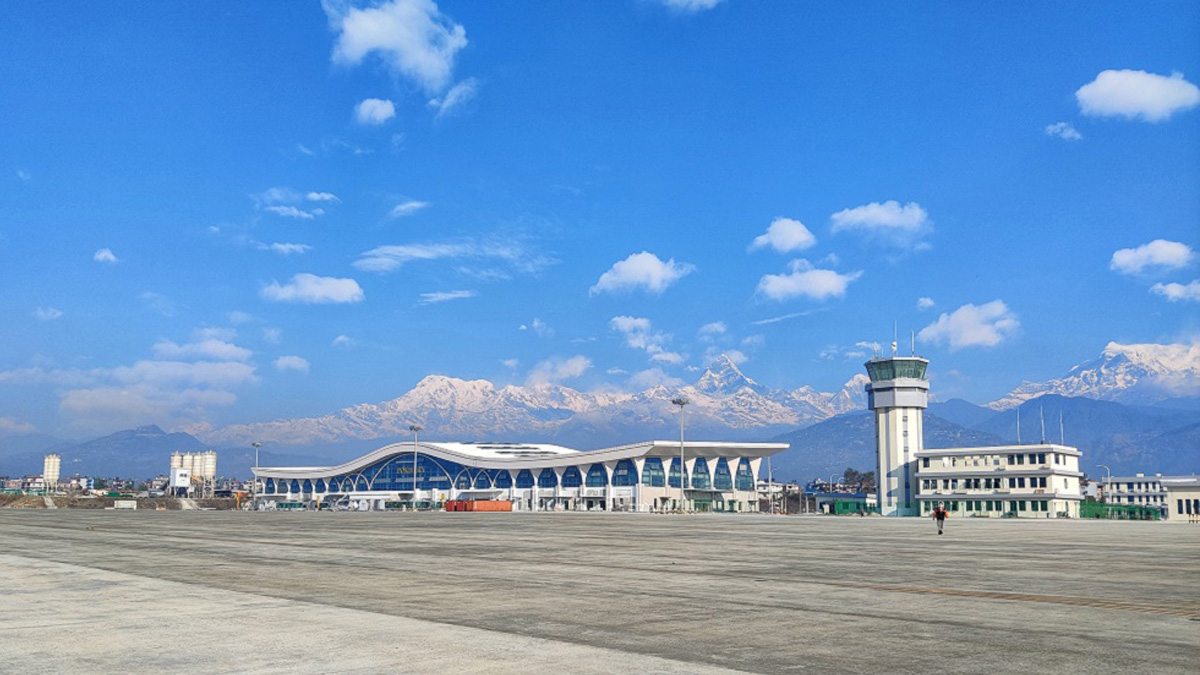

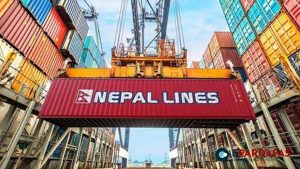
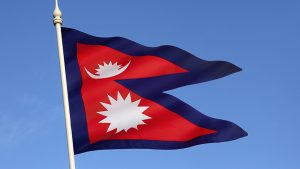
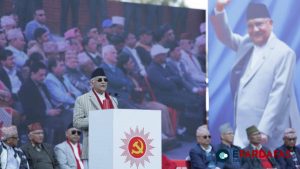

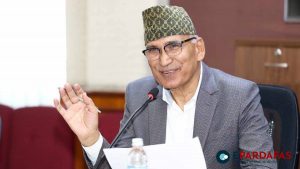






Comments